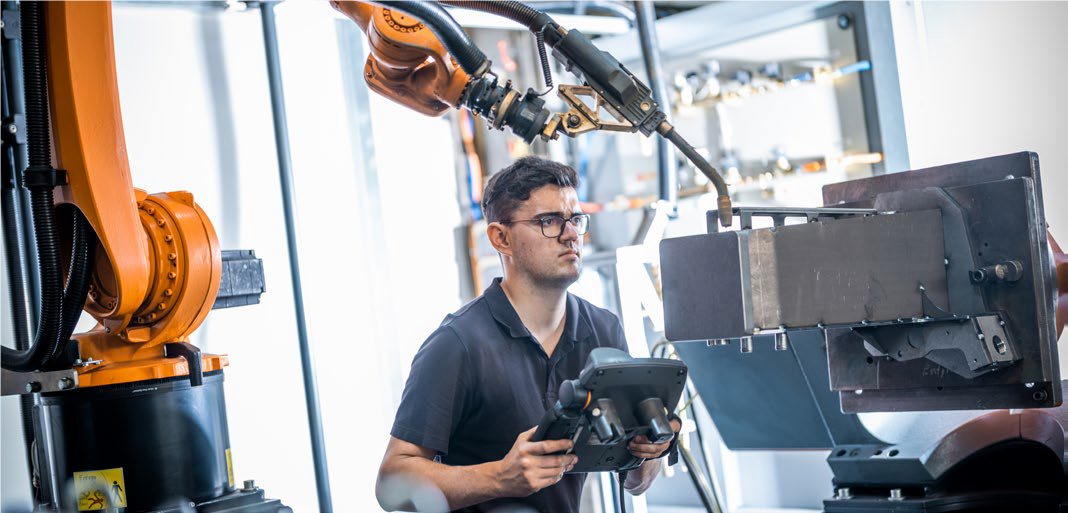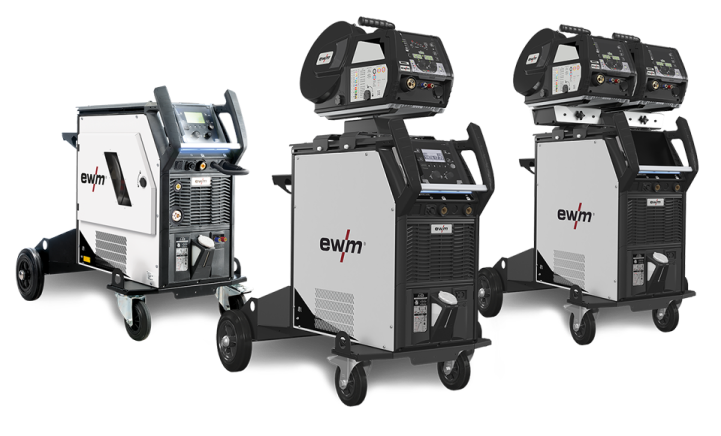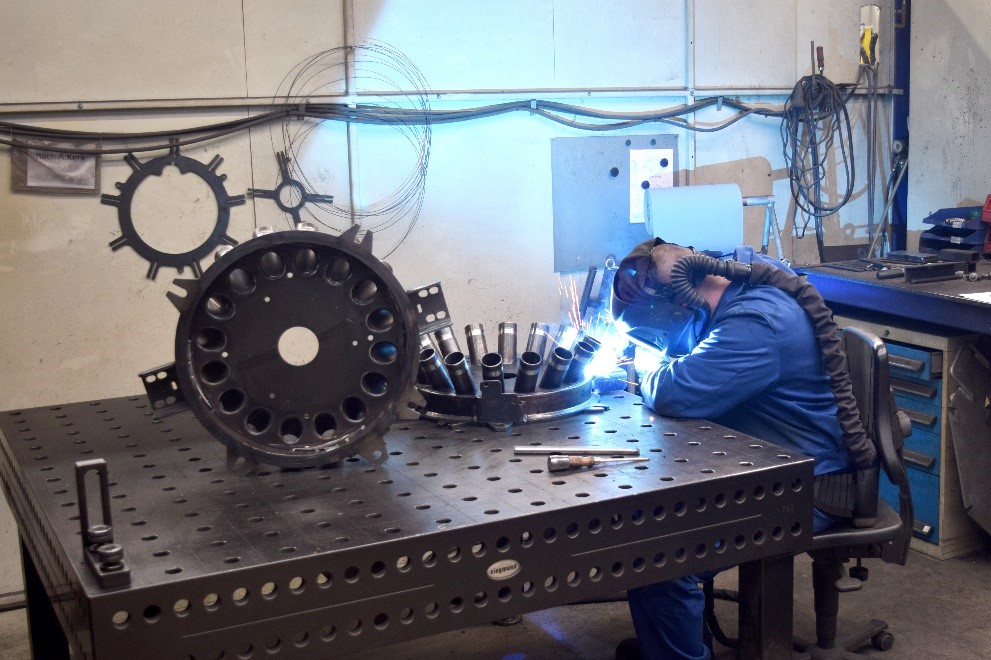Programming the components
Even if the components are all very similar, each of the 20 chassis still has to be taught individually. Teaching in particular presents a real learning curve for the welders: the first component was taught completely and subsequently welded. The seams were initially made in the predefined positions, but as the welding continued, the precision and quality of the result decreased. Could the robot have left its path? In the end, it turned out that the deviations were caused by thermal expansion due to heat input during the welding process. Therefore, it took a few passes for the welders to programme the components so that the weld seam was hit correctly at all times.
Keep your distance
The same rule applies in welding as in the pandemic: keep your distance! However, this altered approach to teaching the robot requires adjustment on the part of the welder. While they are used to keeping the welding torch as close to the weld area as possible, this is not necessary in automated welding. The increased distance in teaching and the distance from the weld seam provide an additional benefit: the tolerances of the components can be compensated for
to a certain extent, and the welding result is reliable. André Schneider is impressed by the quality of the robots’ weld seams: “Weld seams made by welding robots are streets ahead in terms of quality.” Of course, the welding machine control’s continuous monitoring of all welding parameters, and the consistency this ensures, are a factor here.
Hugely increased productivity
Whereas the working time for a chassis used to be a whole day per welder, the loading and tack welding in the new setup take a mere 90 minutes. While the robot welds the entire component in 90 to 120 minutes, the next chassis can
already be prepared in the other booth. The post weld work is also greatly reduced. The robot produces a high weld seam quality and therefore extremely low weld spatter, which reduces the post weld work by 30 per cent while also increasing productivity.
Automation is a continuous process
However, once automation has been set up, it can’t simply be left on its own. “The system is only as good as the work that goes into operating it. You have to keep monitoring the robots at all times”, Christoph Baller, Automation Department Manager and welding expert at Hüffermann, adds for consideration. Baller sees one of his main tasks as constantly teaching and motivating each individual to work precisely.










